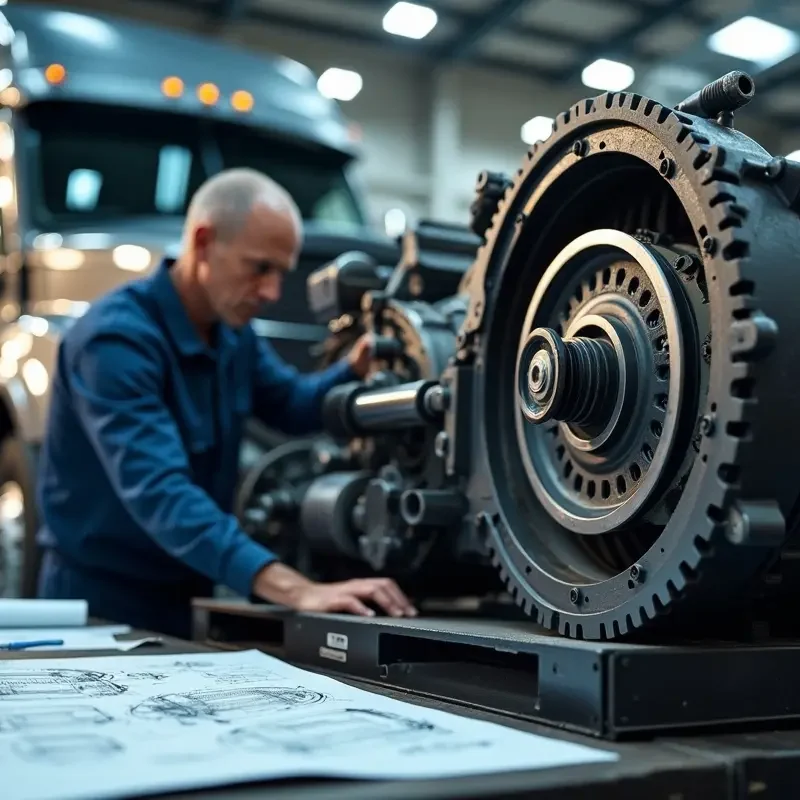When it comes to selecting a transmission for heavy vehicles, the decision isn’t just technical—it’s strategic. Your choice impacts everything from fuel efficiency to long-term maintenance costs. Whether you’re managing a fleet of trucks, driving agricultural machinery, or operating construction vehicles, getting this decision right is critical.
Understanding the Role of Transmission
Before diving into specifics, let’s start with the basics. A transmission, such as an Allison transmission, is essentially the system that transfers power from the engine to the wheels. In heavy vehicles, where torque and power play significant roles, the transmission determines how effectively the vehicle performs under various loads and terrains. But not all transmissions are created equal, so understanding the options is step one.
Types of Transmissions
Heavy vehicles typically rely on three main types of transmissions: manual, automatic, and automated manual transmissions (AMTs). Each comes with its own strengths and trade-offs.
- Manual Transmission – Known for durability and lower upfront costs, manual transmissions give you full control over gear changes. While they require more skill to operate, they’re often preferred for vehicles that tackle rough terrains or demanding tasks.
- Automatic Transmission – These handle gear changes for you, making them ideal for operators who value ease of use. They’re particularly beneficial in urban settings or for drivers who spend long hours behind the wheel.
- Automated Manual Transmission (AMT) – AMTs combine the efficiency of a manual transmission with the convenience of an automatic. They’re a popular middle ground for heavy vehicles, offering fuel efficiency and reduced operator fatigue.
So, which one’s right for your heavy vehicle? That depends on a few critical factors.
1. Vehicle Application and Usage
What’s your heavy vehicle’s primary job? A transmission suited for long-haul trucking might not perform well in stop-and-go urban deliveries or in off-road environments. Think about the demands placed on the vehicle:
- Long-distance hauling – For vehicles covering vast distances, fuel efficiency and reduced driver fatigue are top priorities. AMTs or automatics can be game-changers in this scenario.
- Construction or mining – For rugged, uneven terrains, manual transmissions often shine because of their reliability and ability to handle heavy loads.
- Urban delivery – If your vehicle is navigating city streets with frequent stops, an automatic transmission can offer the seamless shifting needed to keep things moving smoothly.
Consider the environment and job demands first, then assess how different transmissions will perform under those conditions.
2. Fuel Efficiency and Operating Costs
Fuel costs are one of the biggest expenses in operating heavy vehicles, so choosing a transmission that optimises fuel efficiency can lead to significant savings. Generally:
- Manuals and AMTs tend to deliver better fuel efficiency because they allow more control over the engine’s power output.
- Automatics, while convenient, can sometimes lead to higher fuel consumption, especially in older models.
But it’s not just about fuel. Maintenance costs also come into play. Manual transmissions are often easier (and cheaper) to maintain, while automatics might require more specialised repairs if something goes wrong. Keep the bigger picture in mind when weighing short-term convenience against long-term operating expenses.
3. Driver Skill and Training
Who’s behind the wheel? This matters more than you might think. Manual transmissions demand a skilled operator to shift gears effectively. If your team isn’t trained or experienced with manuals, you might face inefficiencies—or even increased wear and tear.
On the other hand, automatics and AMTs reduce the learning curve for drivers. They’re especially beneficial if you’re hiring new operators or working in industries with high driver turnover. A simplified driving experience can also reduce fatigue, making it a safer choice for long shifts.
4. Terrain and Load Requirements
Heavy vehicles often face extreme working conditions, whether it’s climbing steep hills or carrying oversized loads. The right transmission ensures your vehicle can handle these challenges without compromising performance or safety.
- Hilly terrain – Manual transmissions often provide better control for navigating steep inclines, especially when carrying heavy loads.
- Heavy cargo – Both manual and AMTs are great for vehicles consistently hauling substantial weight, as they can better manage torque and power output.
Match the transmission to the terrain and payload your vehicle will regularly encounter.
5. Initial Investment vs. Lifecycle Value
It’s easy to focus on upfront costs when purchasing a vehicle, but the real question is: how does that cost balance out over the vehicle’s life? While manuals tend to have a lower purchase price, automatics and AMTs can pay off in reduced driver fatigue, lower accident risks, and even fuel savings in certain applications. Calculate the total cost of ownership—including fuel, maintenance, and repair costs—before making a decision.
Emerging Technologies to Watch
The transmission market isn’t standing still. Advances in technology are making transmissions smarter and more efficient. For example, predictive shifting technology is becoming increasingly common, using data to anticipate gear changes and optimise performance. If your business is future-focused, keeping an eye on these innovations could influence your choice.
Finding the Best Fit
Choosing the right transmission isn’t about picking the most advanced option on the market—it’s about understanding what your heavy vehicle truly needs. Ask yourself:
- What’s the vehicle’s primary job?
- Will the terrain and load conditions remain consistent, or will they vary?
- Do your drivers have the skills for manual operation, or would automation simplify training?
- How do fuel costs and long-term maintenance play into your budget?
By answering these questions, you’ll have a much clearer sense of which transmission type aligns with your goals. Remember, there’s no one-size-fits-all answer. The right transmission is the one that best supports your vehicle’s performance and your business’s priorities.
Making Your Choice Count
Choosing a transmission for a heavy vehicle is an investment in efficiency, reliability, and safety. It’s not just about what works today but what will serve you best in the years to come. Take the time to evaluate your options, consider your vehicle’s application, and think long-term.







